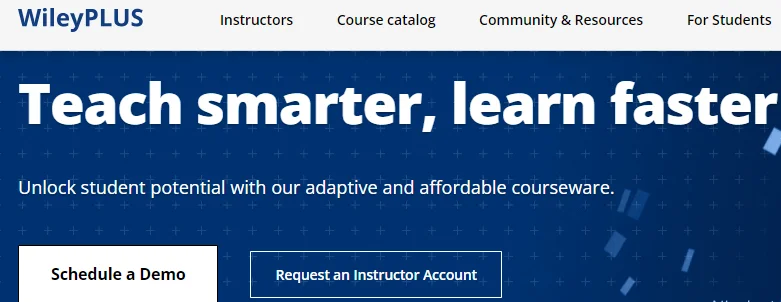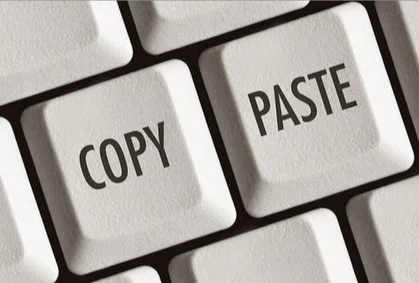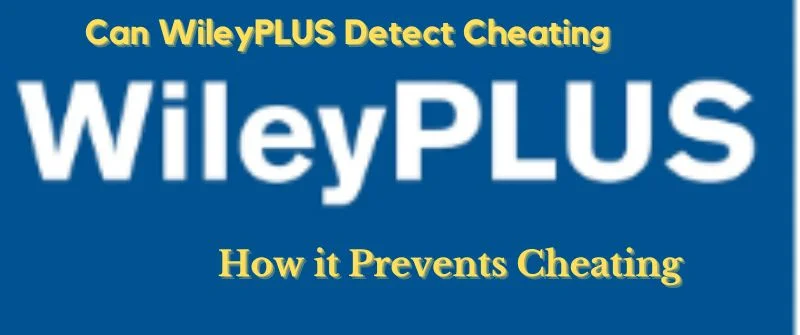The popular educational platform WileyPLUS effectively upholds academic honesty and eliminates cheating inside its online learning environment.
It ensures that student assessments and coursework represent their knowledge and efforts appropriately by putting sophisticated tools and protections in place.
In this guide, we will look at the numerous strategies WileyPLUS uses to catch and stop cheating so that the educational process is fair and genuine.
Can WileyPLUS Detect Cheating?
WileyPLUS is an educational platform that employs several measures to detect and deter user cheating.

One primary method is the integration of proctored online exams and quizzes.
These assessments are often monitored in real-time by proctoring services that utilize AI technology to flag suspicious behavior, such as excessive eye movements or multiple faces in the camera frame.
Additionally, WileyPLUS frequently randomizes questions and answer choices, making it challenging for students to share answers during assessments.
The platform also employs plagiarism detection software to scan and compare submitted assignments against a vast academic content database, identifying potential plagiarism instances.
Furthermore, instructors can set time limits for assignments and quizzes, reducing the opportunity for students to seek external assistance.
How Teachers can use WileyPLUS to Detect Cheating
Teachers can use WileyPLUS to detect cheating through several means. They can analyze data and patterns, looking for unusual consistency or abrupt performance improvements in student submissions.
Plagiarism detection tools within the platform can identify copied content from external sources. Additionally, instructors can set unique assignments for different students or sections to discourage sharing. Utilizing randomized question banks for quizzes and exams can also thwart cheating.
Timed assessments limit the opportunity for external assistance. Finally, maintaining open communication with students, explaining academic integrity expectations, and promptly addressing suspected cases of cheating ensures a vigilant and effective approach to preserving educational integrity using WileyPLUS.
Can WileyPLUS Detect Copy and Paste?
WileyPLus has several methods that they can enforce to determine cheating cases.

First, WileyPLUS uses plagiarism detection software to identify copy-and-paste plagiarism in students’ assignments and submissions.
Even so, this software scans the text submitted by students and compares it to a vast academic and online content database, looking for similarities and matches. It raises red flags for potential plagiarism if it detects significant portions of text that closely resemble existing sources.
However, it’s essential to note that the effectiveness of plagiarism detection software can vary, and it may only catch some instances of copy-and-paste plagiarism, especially if students manipulate or rephrase the text to evade detection.
Therefore, while WileyPLUS employs these tools to discourage academic misconduct, instructors.
Educational institutions should also play an active role in educating students about the importance of academic integrity and the consequences of plagiarism.
Understanding How WileyPLUS Works
WileyPLUS is an online learning platform with digital resources, tests, and interactive features to improve learning. It provides access to e-textbooks, assignments, tests, and course materials the instructor makes.
Students can interact with the course materials, get immediate feedback on their work, and monitor their development. In order to evaluate student learning, instructors can personalize the curriculum, keep an eye on their progress, and use analytics.
Through various evaluation and plagiarism detection technologies, WileyPLUS seeks to develop an engaging and effective learning environment that benefits students and educators.
Unveiling WileyPLUS: Features and Functions
Here are the main features that you can maximize to get the desired output:

- E-Textbooks: WileyPLUS provides access to digital textbooks, allowing students to read and interact with course materials online. This saves costs and provides easy access anytime, anywhere.
- Homework and Assignments: Instructors can create and assign homework, quizzes, and assignments tailored to their courses. These assessments often provide immediate feedback, helping students understand their strengths and weaknesses.
- Interactive Content: WileyPLUS includes interactive elements like videos, simulations, and multimedia resources that engage students and facilitate better comprehension of complex topics.
- Gradebook: Instructors can track students’ progress and performance through the gradebook feature. It simplifies the grading process and helps identify areas where students need additional support.
- Customization: Educators can customize their courses by adding, editing, or removing content to align with their teaching goals and preferences.
- Analytics: WileyPLUS offers analytical tools that provide insights into students’ performance. Instructors can identify struggling students and adapt their teaching methods accordingly.
- Plagiarism Detection: It employs plagiarism detection software to scan assignments for potential instances of plagiarism, promoting academic integrity.
- Mobile Accessibility: The platform is accessible on various devices, like smartphones and tablets, making it convenient for students to access resources on the go.
The Mechanics of WileyPLUS: How It Tracks Student Progress
WileyPLUS meticulously tracks student progress through its integrated mechanisms. It monitors students’ engagement by recording their interactions with course materials, including e-textbooks, videos, and assignments.
Typically, this data helps instructors identify areas where students may struggle or need additional guidance.
The gradebook feature offers real-time insights into students’ performance, displaying scores for quizzes, homework, and exams.
Instructors can use this information to adapt their teaching strategies and provide timely support to struggling students.
Additionally, the platform’s analytics provide a holistic view of class performance, enabling educators to make data-driven decisions to enhance the learning experience.
WileyPLUS’ tracking tools empower both students and instructors to optimize the educational journey.
Types of Cheating WileyPLUS Can Detect
Copy-Pasting: Plagiarism and Its Digital Traces
WileyPLUS uses complex methods to detect plagiarism, including verbatim plagiarism, when students directly copy and paste text from outside sources without giving correct credit.

These technologies can also identify mosaic plagiarism, which is the practice of rearranging or paraphrasing content while keeping the organization and ideas of the original source.
WileyPLUS can also catch self-plagiarism, where students reuse their prior work without giving it the required credit.
WileyPLUS assists in preserving academic integrity by highlighting instances of copy-pasting and comparing submitted information against huge databases. This way, students are encouraged to generate unique work that is appropriately referenced.
Collaboration Conundrum: Spotting Unpermitted Group Work
Detecting unpermitted group work in educational platforms like WileyPLUS can be challenging but crucial for maintaining academic integrity.
Suspicion arises when multiple students submit nearly identical answers or solutions, suggesting collaboration beyond acceptable limits.
Instructors may also notice inconsistencies in individual performance compared to group submissions. To address this collaboration conundrum, WileyPLUS relies on data analytics and plagiarism detection tools to flag potential issues.
External Help: Detecting Unauthorized Assistance
Detecting external help or unauthorized assistance in WileyPLUS involves monitoring students’ work.
Instructors should watch for abrupt improvements in performance, inconsistencies in individual skills versus assignment quality, or unusual patterns in response times.
Suspicion may arise when answers significantly deviate from prior submissions or demonstrate expertise beyond the course’s scope.
Limitations and False Positives
1. Technological Hurdles: Where WileyPLUS Falls Short

Technical hurdles can result in false suspicions of academic misconduct, particularly when plagiarism detection tools misinterpret legitimate citations or phrasing as plagiarism.
Moreover, these tools may not detect subtle forms of cheating, such as contract cheating, where students pay others to complete assignments.
Additionally, advanced collaboration methods might evade detection. To address these shortcomings, instructors should use WileyPLUS as a supportive tool rather than a definitive judge of academic honesty.
Human judgment and clear communication on collaboration policies are crucial for a balanced approach to academic integrity.
2. Unintended Flags: Addressing False Cheating Alerts
Addressing false cheating alerts in WileyPLUS is essential for maintaining trust and fairness in the educational process.
Students should promptly communicate with their instructors to explain the situation when they encounter unintended flags. Instructors can then review the flagged content, consider the student’s explanation, and assess the validity of the alert.
Clear communication, understanding, and transparency are vital in resolving such issues. While technology aids in identifying potential misconduct, it’s crucial to recognize that false positives can occur due to various reasons.
